This week, Gary asked if I wanted to accompany him to the British Airways Training Centre at Cranebank, near London Heathrow. Obviously, I jumped at the chance to spend three hours in a Level-D full motion, ten million pound flight simulator!
We arrived an hour before and met our supervisor, who was currently on maternity leave from flying the A320 – a couple of times a week she helps out at the school for external visits such as this. She soon established that Gary and I probably knew more about the Tripple Seven than she did and that it was probably best just to let us go flying!
We head over to the simulator, one of fifteen that British Airways house at Cranebank, stopping to have a look at some of the others on the way (B747-400, B767, A320, B737-400). The Boeing 777-200 simulator we would be flying is rated as being so realistic, that it allows pilots to train and qualify on type without any time flying the real aircraft. The first time they do fly the real aircraft, will be with fare paying passengers in the back. Wow!
We strapped in and set the aircraft up for a Heathrow – Gatwick flight, just to familiarise ourselves with the simulated motion. We didn’t need to wait long, though – Gary’s brake test on our taxi out to 27L planted our faces into the glareshield!
The motion was incredible, just like the real thing. Not only did you feel the acceleration, pitch attitude and bank – but also the bumps as the nose wheel went over the runway lights, the drop that the spoilers produce when extended and the shudder that the under carriage and flaps produce when lowered.
We landed at Gatwick and repositioned the simulator at New York’s JFK for a 31L departure and back in for the famous Canarsie VOR 13L approach. It was amazing how busy the cockpit environment got during the final stages of this approach. Never the less, Gary and I both managed to land it smack on the numbers! Afterwards we setup for a full weight high-speed rejected takeoff, with a cargo fire warning occurring just before V1 (the point at which a failure is taken into the air). The simulator modelled this very well, with me almost standing on the brakes and Gary’s nose up against the glareshield, held in only by his seatbelt. Great fun!
We flew some more circuits at various other airfields before heading back to London to end our session with some low visibility, cross wind single engine approaches. We were amazed at how well the aircraft’s trim system coped in these circumstances. The automatics took away any noticeable effects of the dead engine, which made it very easy to continue flying.
All too soon, our three hours were up and it was time to make our final landing and taxi the aircraft back onto stand at Terminal 5. Our supervisor said she had never seen anyone come in and fly without any tuition, and almost offered us a job there and then! Between us we had managed to fly some of the most challenging approaches in the world, deal with emergencies on takeoff and landing and even a potential bomb threat that was thrown in (not dealt with so well!).
I’d like to thank Gary again for the opportunity to accompany him to the simulator, it was a once in a lifetime experience!
Here are some photos I took during our visit:

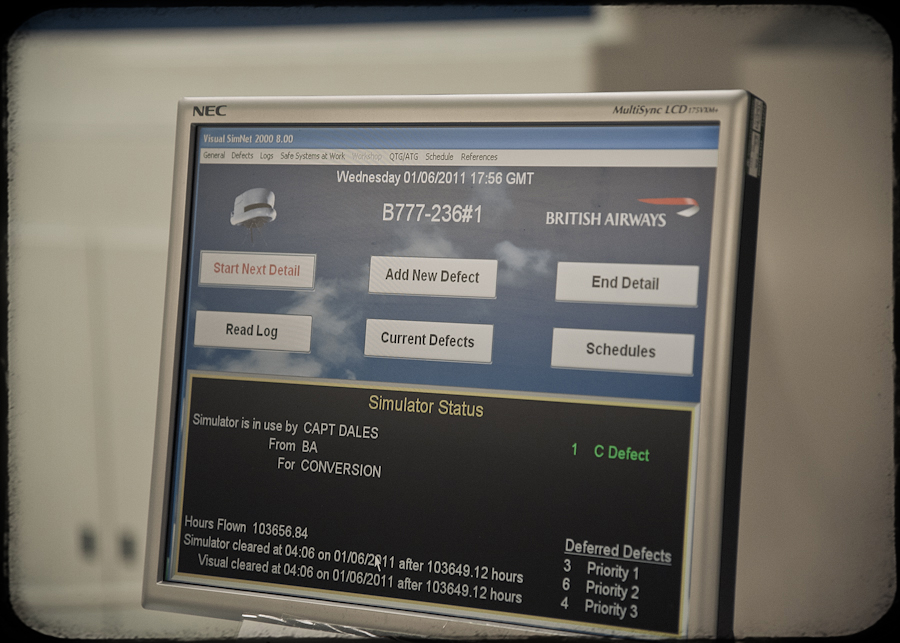

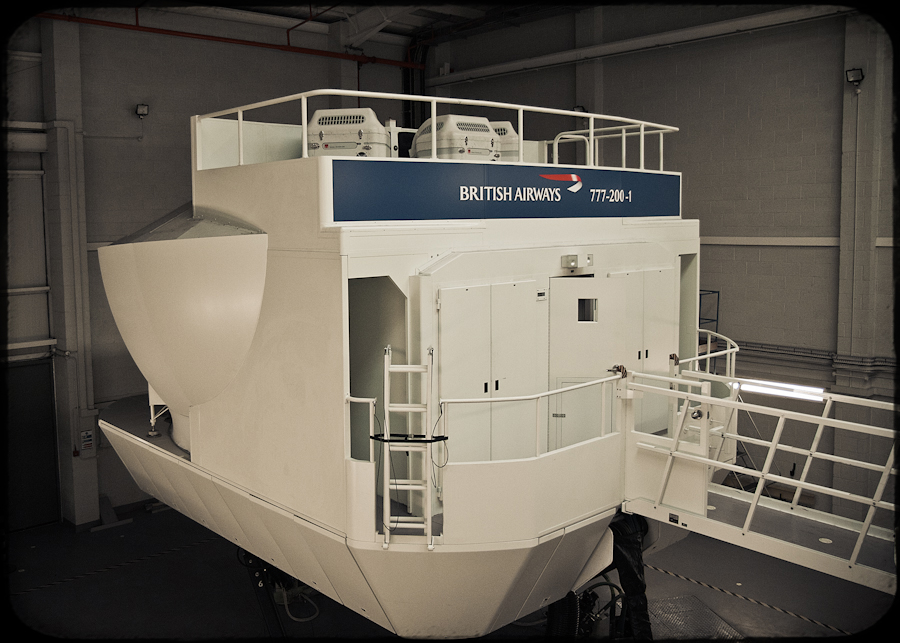
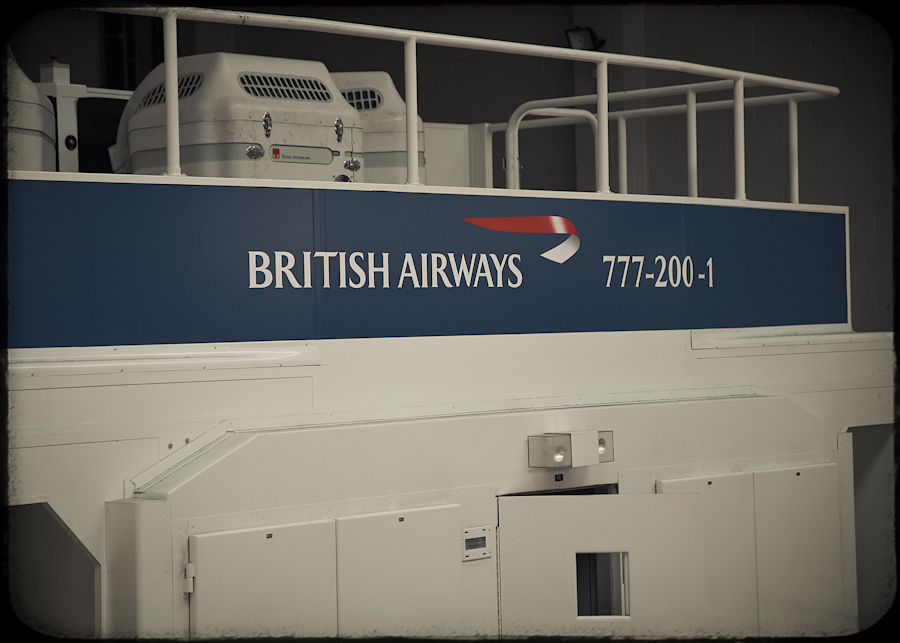

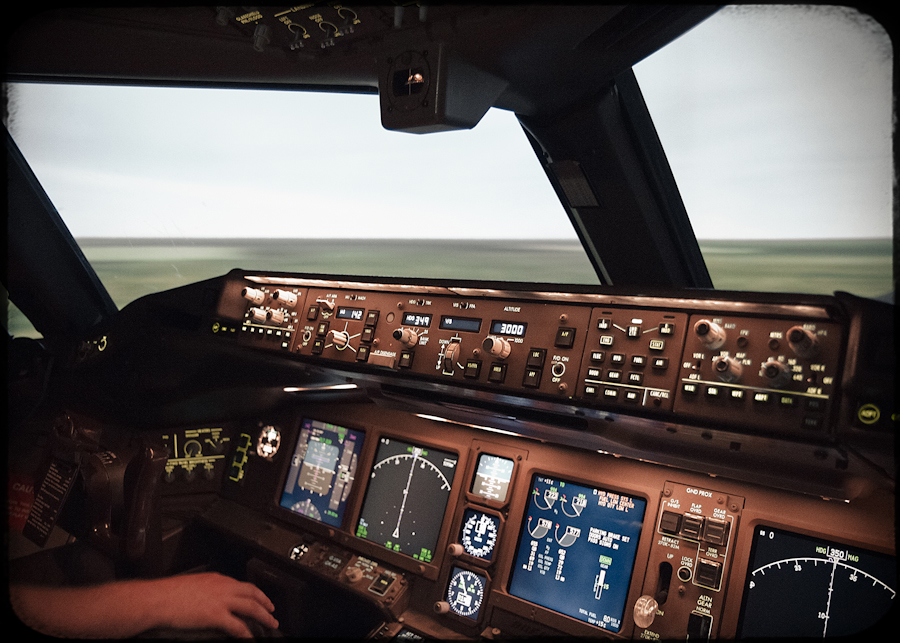
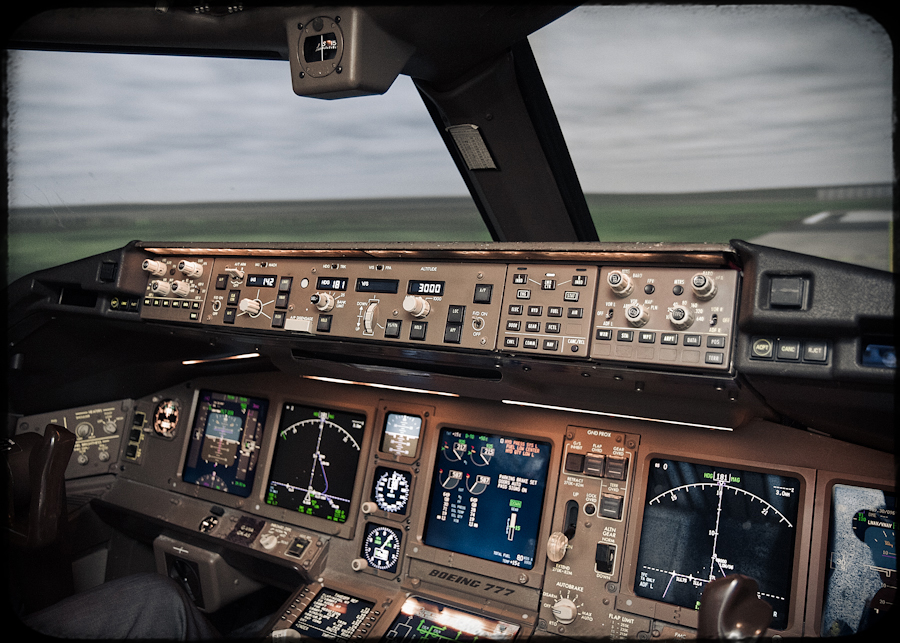
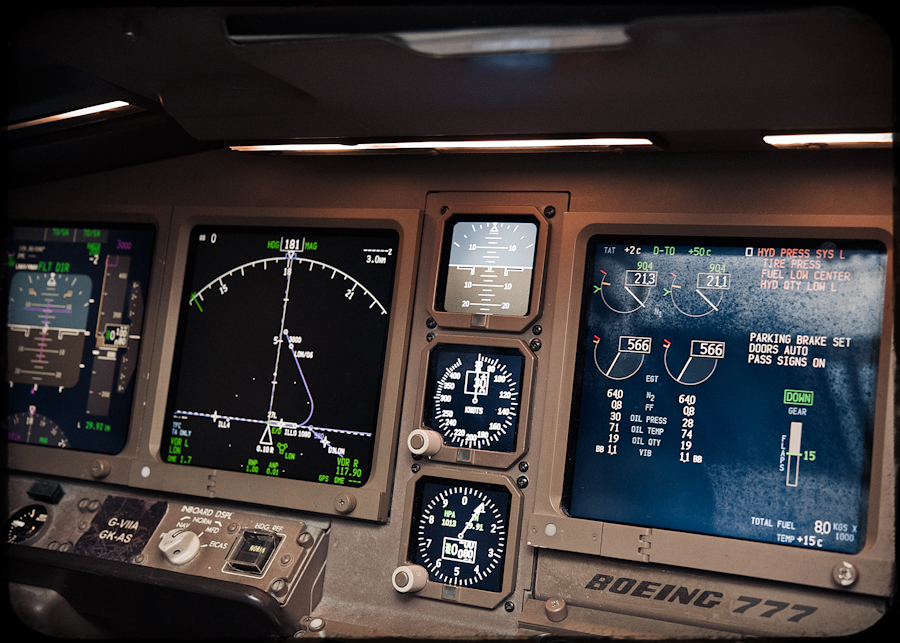


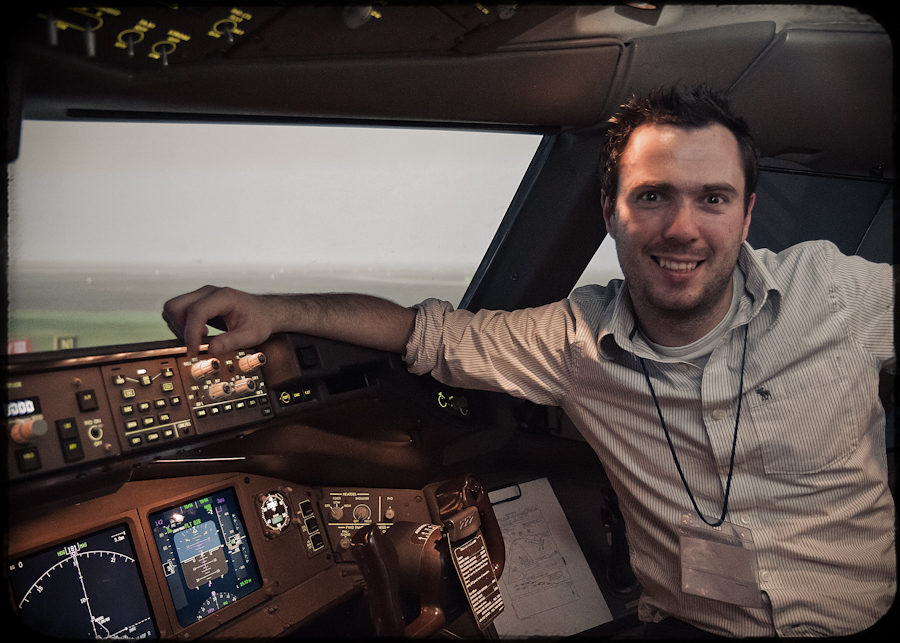
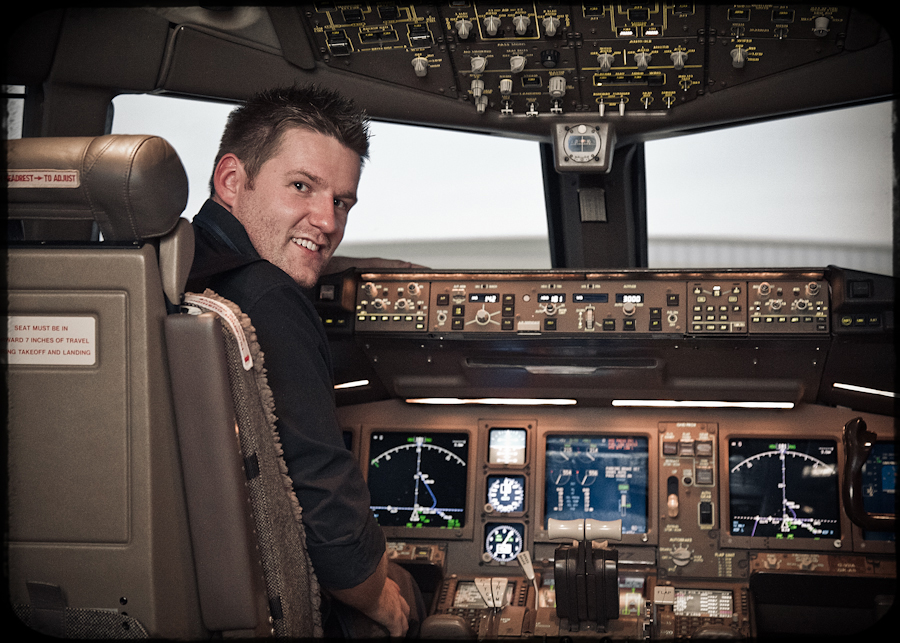

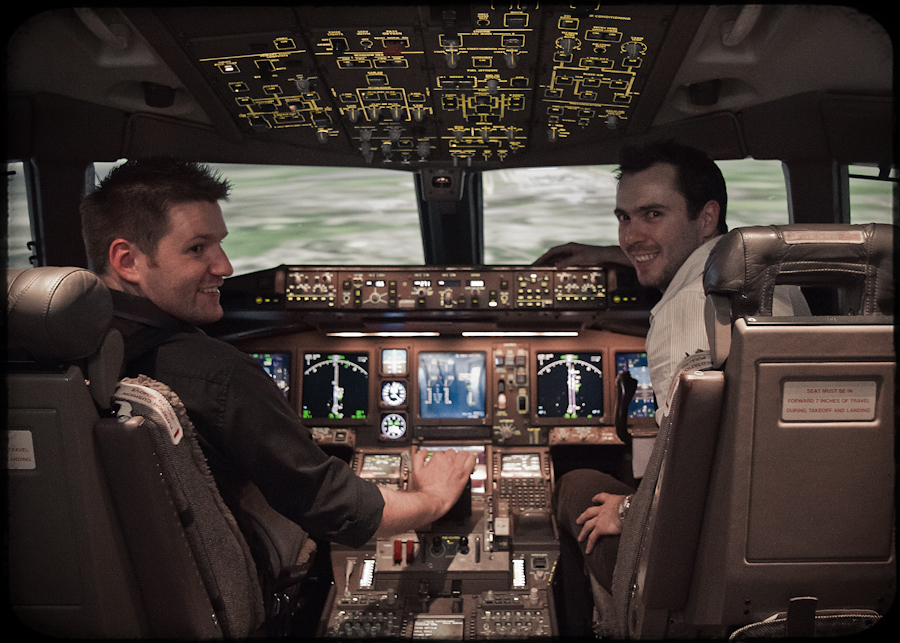
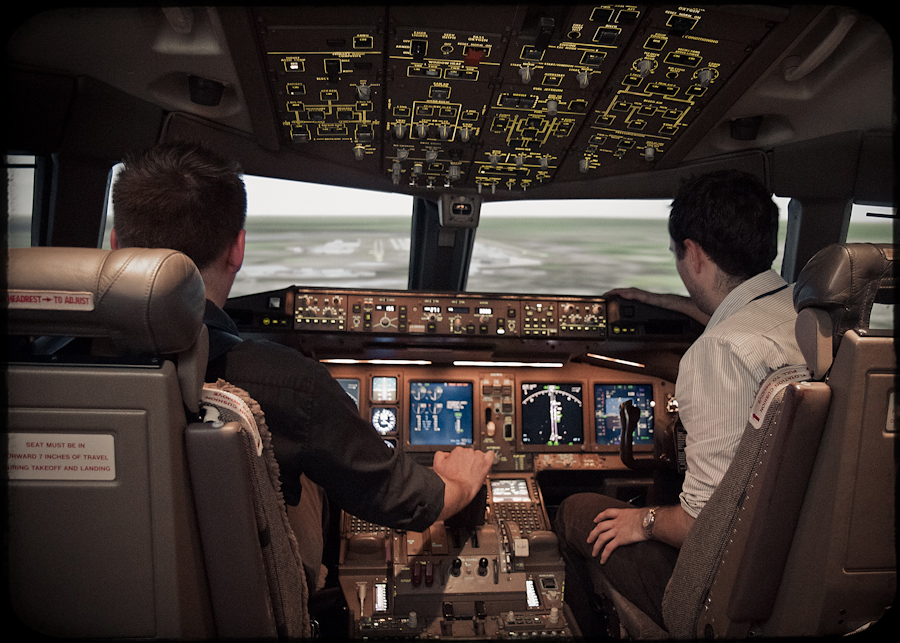
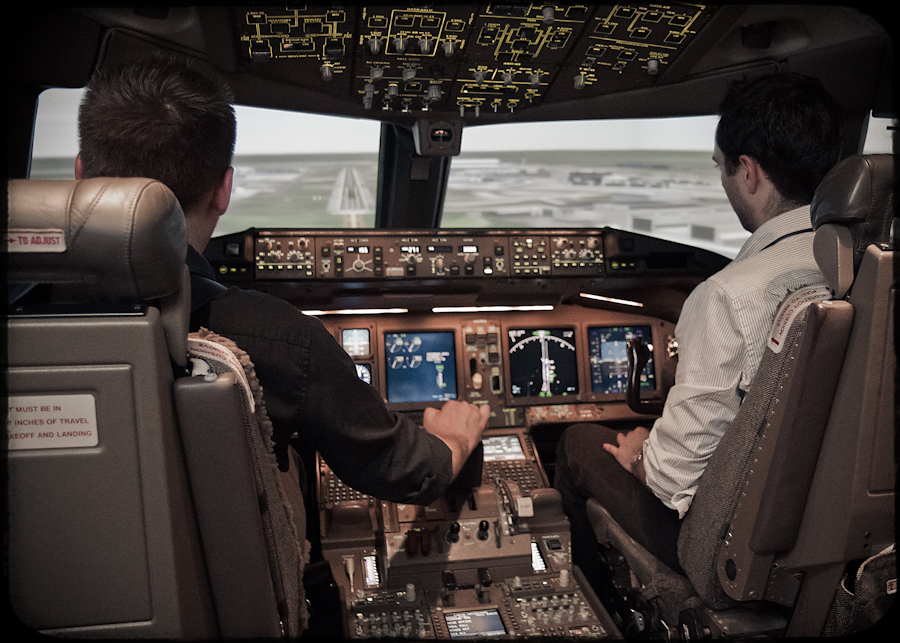

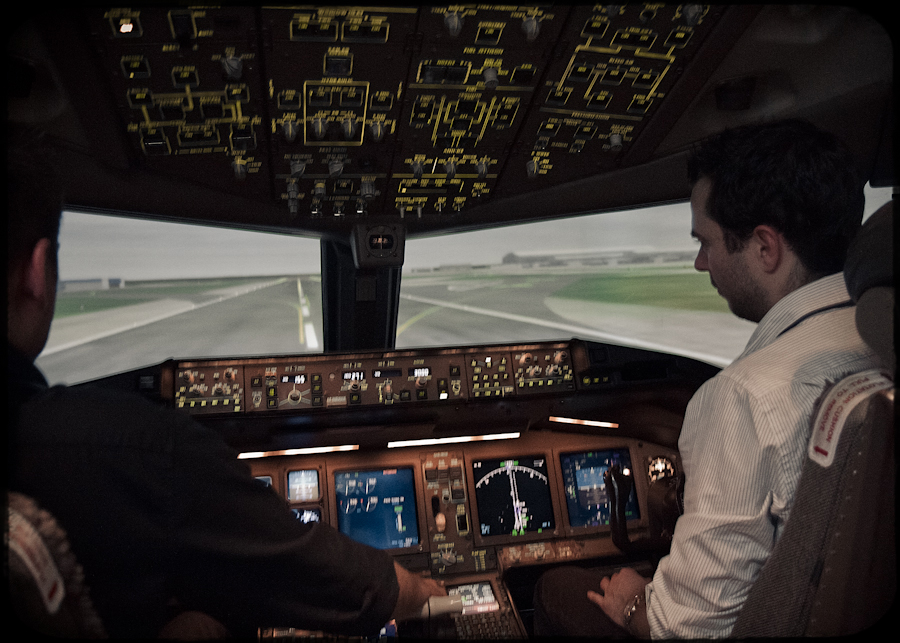
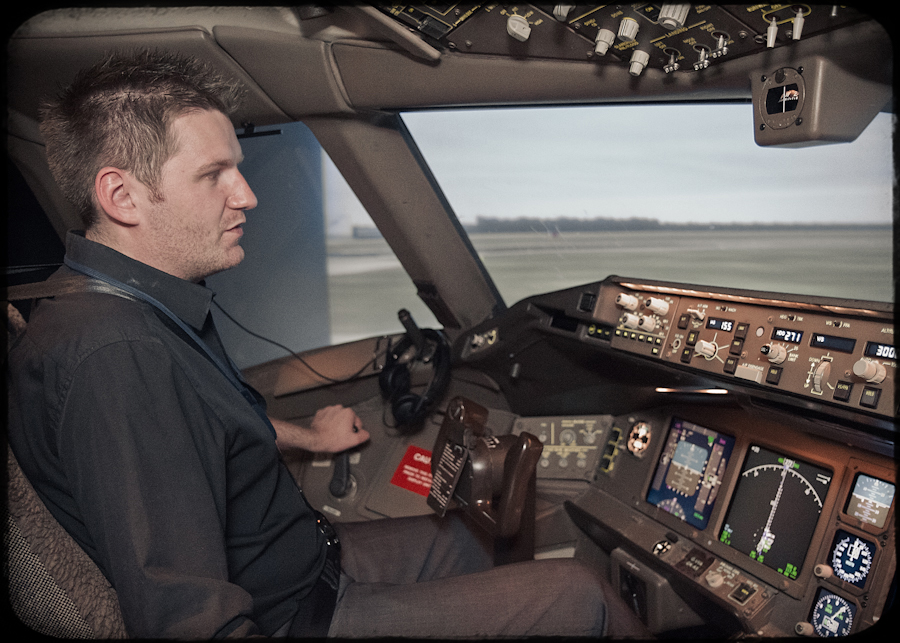
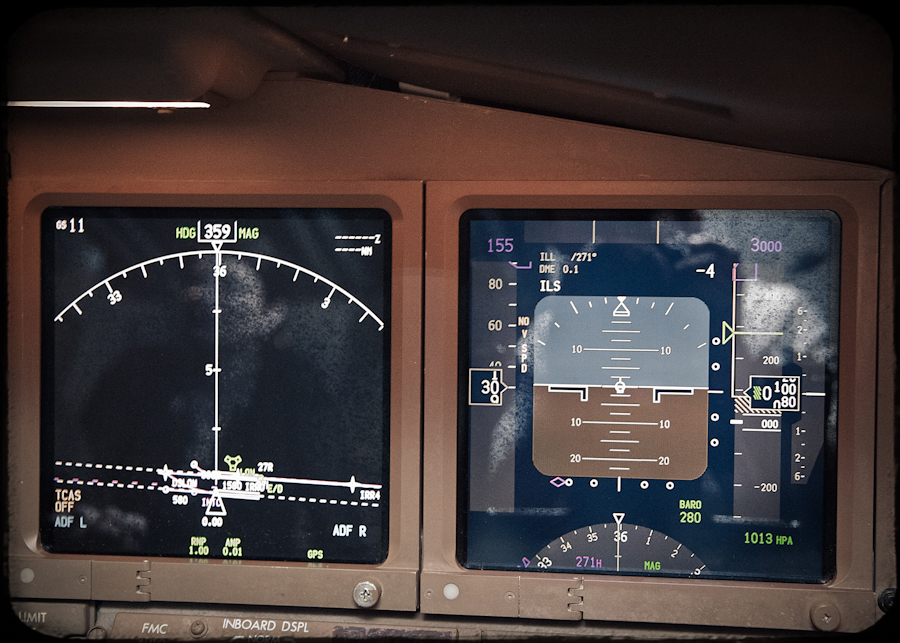
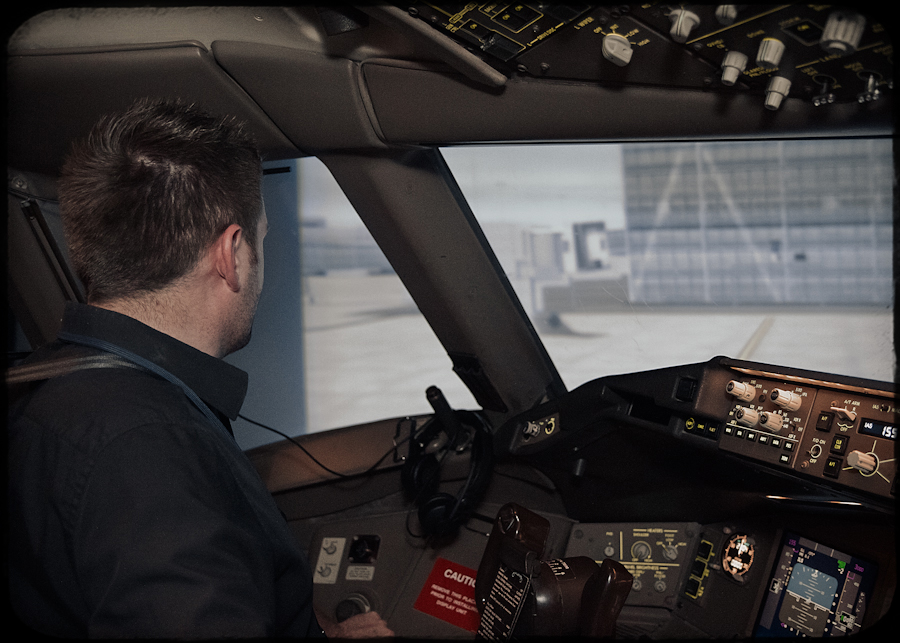

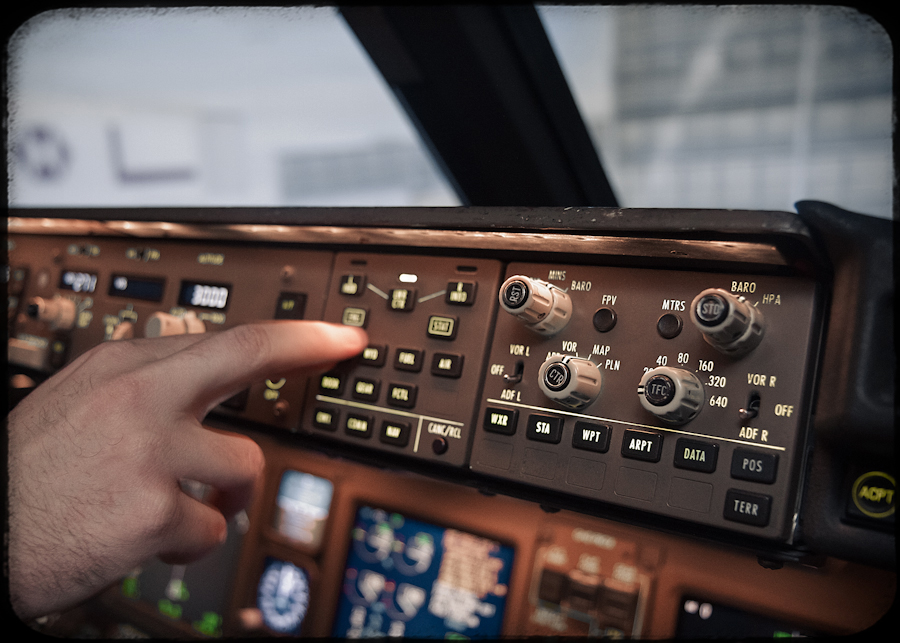
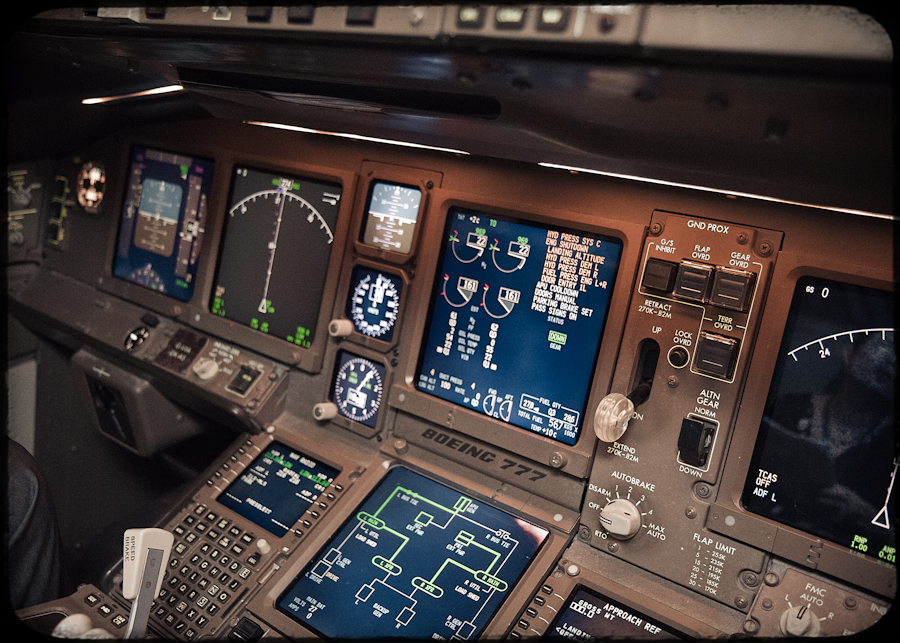
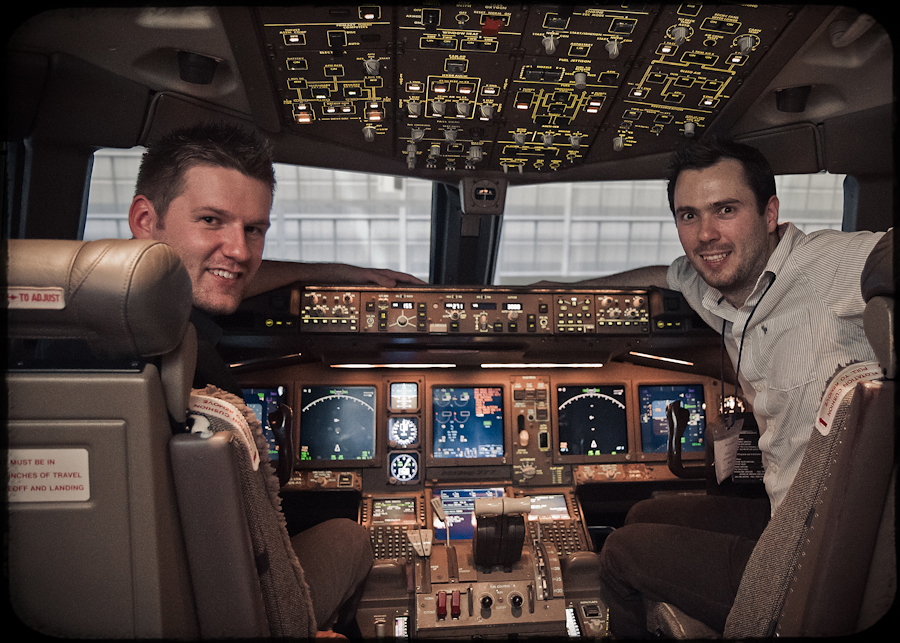



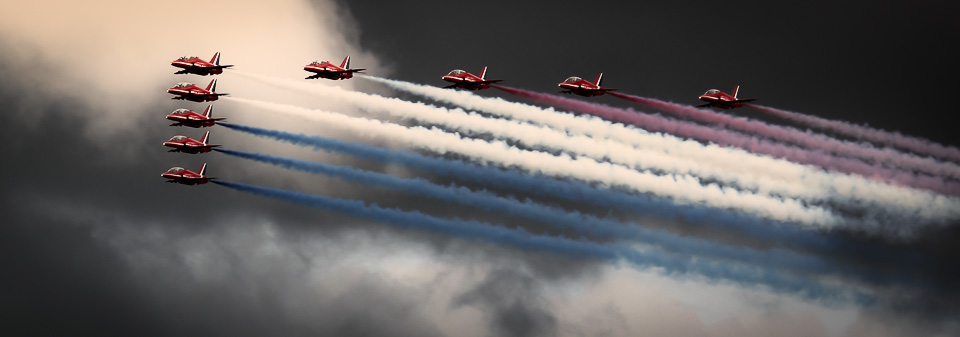
by Andrew